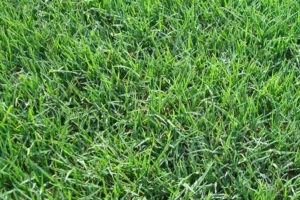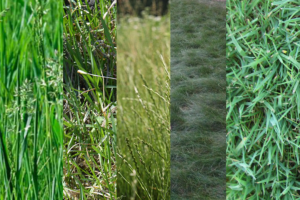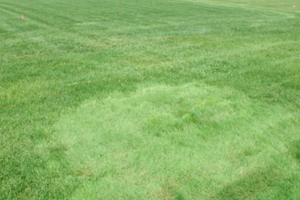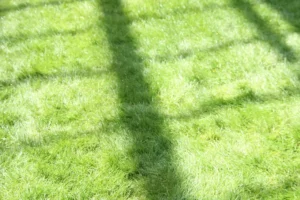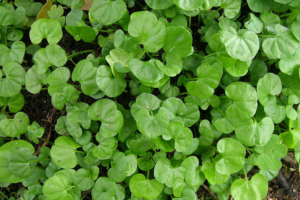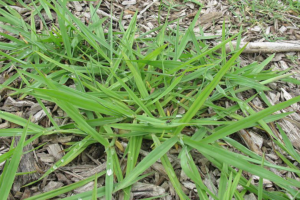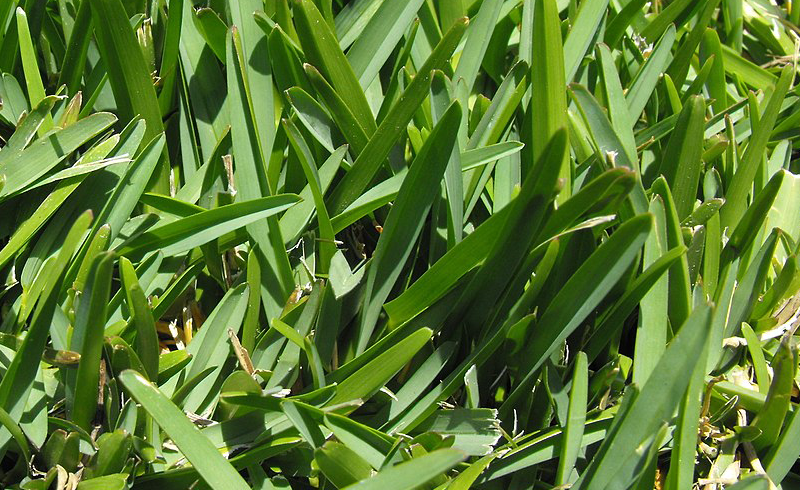
Introduction
St. Augustine grass, known scientifically as Stenotaphrum secundatum, is a popular warm-season lawn grass widely used in tropical and subtropical regions. Its lush, thick growth and deep green color make it a favorite among homeowners, landscapers, and turf professionals.
Native to the coastal regions of both the Gulf of Mexico and the Mediterranean, St. Augustine grass is well-adapted to sandy soil and salty conditions, making it an excellent choice for coastal lawns and landscapes. Its ability to form a dense carpet of grass and its relatively high shade tolerance compared to other warm-season grasses also contribute to its popularity.
However, like any plant, St. Augustine grass has needs and challenges. Understanding these is key to cultivating and maintaining a beautiful St. Augustine lawn. In this comprehensive guide, we will explore everything you need to know about St. Augustine grass, from its history and characteristics to its cultivation, benefits, uses, and the challenges associated with its growth and maintenance.
Whether you’re a homeowner looking to establish a new lawn, a landscaper seeking to expand your knowledge or a grass enthusiast interested in learning more about this remarkable grass species, this guide is for you.
History and Origin of St. Augustine Grass
St. Augustine grass, named after the city in Florida where it was first identified, has a rich history that dates back hundreds of years. Its scientific name, Stenotaphrum secundatum, reflects its unique growth pattern, with ‘secundatum’ referring to the one-sided arrangement of its flower spikes.
Native Regions
St. Augustine grass is native to the Gulf of Mexico, the Caribbean, and the Mediterranean coastal regions. Its natural habitat includes sandy beach ridges, coastal dunes, and lagoons, which explains its high tolerance for salt and preference for warm, humid climates.
Spread and Cultivation
The grass was likely brought to North America through trade and exploration routes, where it quickly adapted to the warm climates of the southern United States. Today, it is a popular lawn choice in many parts of the world, including the southern United States, Mexico, South America, South Africa, Western Africa, and Australia.
Historical Uses
Historically, St. Augustine grass has been used for a variety of purposes. In addition to its use as a lawn grass, it has been used for stabilizing soil, preventing erosion, and as a pasture grass for livestock. Its dense growth and quick spread make it practical for these purposes.
In the following sections, we will delve into the characteristics of St. Augustine grass, its benefits, and how to cultivate and maintain it.
Characteristics of St. Augustine Grass
Physical Characteristics
St. Augustine grass is known for its broad, flat, rich, deep green blades. The grass blades are coarse in texture, with a leaf width ranging from 8 to 12 millimeters. The grass forms a dense turf, one of its most desirable traits, providing a lush, carpet-like appearance to lawns and landscapes.
The grass has a robust root system primarily made up of stolons. These stolons, or creeping, horizontal stems, allow the grass to spread quickly and recover from damage. They also give St. Augustine grass its ability to form a dense, thick mat of grass, effectively crowding out most weeds.
Growth Habits and Conditions
St. Augustine grass is a warm-season grass that grows best in warm, humid climates. It thrives in temperatures between 80 and 100 degrees Fahrenheit, and while it can tolerate mild cold, it may go dormant or turn brown in freezing temperatures.
One of the distinguishing characteristics of St. Augustine grass is its shade tolerance. While it prefers full sun, it can tolerate more shade than most other warm-season grasses, making it a good choice for lawns with trees or other sources of shade. However, the grass may become thin and sparse in very dense shade.
St. Augustine grass prefers moist, well-drained soils with a pH between 5.0 and 8.5. It can tolerate a wide range of soil types, from sandy to clay, but it does best in soils rich in organic matter.
In the following sections, we will explore the benefits of St. Augustine grass, how to cultivate and maintain it, and its various uses.
Benefits of St. Augustine Grass
Environmental Benefits
St. Augustine grass offers several environmental benefits. Its dense growth helps prevent soil erosion, making it an excellent choice for areas prone to erosion, such as slopes and waterfront properties. St. Augustine grass helps maintain soil health and prevents the runoff of sediments and pollutants into nearby water bodies by holding the soil in place.
In addition, St. Augustine grass plays a role in carbon sequestration. Like all plants, it absorbs carbon dioxide from the atmosphere and stores it in its tissues, helping mitigate climate change’s effects. Its robust growth and extensive coverage mean it can sequester significant carbon.
Agricultural and Economic Benefits
In agricultural settings, St. Augustine grass serves as a valuable forage crop. Its high yield and nutritional content make it a good livestock feed source. It’s particularly beneficial in coastal regions, where salt tolerance allows it to thrive where other forage crops might struggle.
From an economic perspective, St. Augustine grass is a valuable commodity in the landscaping and turf industries. Its lush, carpet-like appearance makes it a popular choice for lawns, golf courses, and sports fields. Its ability to proliferate and recover from damage makes it a cost-effective choice, as it requires less reseeding and repair than other grass species.
Recreational Benefits
St. Augustine grass is widely used in recreational settings due to its dense, cushion-like turf and high wear tolerance. It’s a common choice for sports fields, parks, and golf courses, providing a safe and comfortable surface for various activities.
Moreover, its lush, green appearance and soft texture make St. Augustine lawns a favorite among homeowners. A well-maintained St. Augustine lawn can significantly enhance a home’s aesthetic appeal and recreational value, providing a beautiful and enjoyable outdoor space for relaxation and play.
In the following sections, we will discuss how to cultivate and maintain St. Augustine grass, its various uses, and the challenges associated with its growth and maintenance.
Cultivation and Maintenance of St. Augustine Grass
Planting and Growing Conditions
St. Augustine grass can be established from sod, sprigs, or plugs. Sod is the quickest way to establish a lawn but is also the most expensive. Sprigs and plugs are less expensive, but it takes longer to establish a full lawn. The best time to plant St. Augustine grass is in late spring or early summer when soil temperatures are warm enough to promote growth.
St. Augustine grass thrives in warm, humid climates and prefers temperatures between 80 and 100 degrees Fahrenheit. It can tolerate mild cold but may go dormant or brown in freezing temperatures. It prefers full sun but can tolerate more shade than most warm-season grasses.
Care and Maintenance
Once established, St. Augustine grass requires regular care to maintain its health and appearance. This includes watering, mowing, fertilizing, and pest management.
Watering should be done sincerely and infrequently, soaking the soil to a depth of 4 to 6 inches. This encourages the grass to develop a deep root system, which helps it withstand drought conditions. During periods of active growth, St. Augustine grass typically needs about 1 inch of water per week, either from rainfall or irrigation.
Mowing should be done regularly to maintain a height of 2.5 to 4 inches. This helps the grass maintain its density and crowd out weeds. Sharp mower blades should be used to avoid tearing the grass blades, which can make the grass more susceptible to disease.
Fertilizer should be applied in the spring and summer during periods of active growth. A balanced fertilizer that includes nitrogen, phosphorus, and potassium is typically recommended. Following the manufacturer’s instructions is essential to avoid over-fertilizing, which can harm the grass and the environment.
Pest management is also an essential part of St. Augustine grass care. Common pests include chinch bugs, grubs, and sod webworms. Regular monitoring can help detect pest problems early, and appropriate control measures can be taken as needed.
In the following sections, we will discuss the uses of St. Augustine grass and the challenges associated with its growth and maintenance.
Uses of St. Augustine Grass
Landscaping and Lawns
St. Augustine grass is a popular choice for lawns and landscaping in many parts of the world. Its lush, carpet-like appearance and deep green color make it an attractive option for homeowners. Its ability to form a dense turf also makes it effective at crowding out most weeds, reducing the need for weed control.
In addition to its aesthetic appeal, St. Augustine grass is valued for its adaptability. It can thrive in various soil types and conditions and has a higher shade tolerance than most warm-season grasses. This makes it versatile for various landscapes, from sunny lawns to shaded yards.
Agriculture and Animal Feed
In agricultural settings, St. Augustine grass serves as a valuable forage crop. Its high yield and nutritional content make it a good livestock feed source. It’s particularly beneficial in coastal regions, where salt tolerance allows it to thrive where other forage crops might struggle.
St. Augustine grass can also be used for soil conservation in agricultural settings. Its dense growth and robust root system help prevent soil erosion, a significant issue in agricultural landscapes. St. Augustine grass helps maintain soil health and prevent the runoff of sediments and pollutants by holding the soil in place.
Erosion Control and Soil Conservation
St. Augustine grass is often used for erosion control and soil conservation. Its dense growth helps hold the soil in place, preventing erosion caused by wind and water. This makes it an excellent choice for areas prone to erosion, such as slopes and waterfront properties.
In addition to preventing erosion, St. Augustine grass can also improve soil health. Its root system helps improve soil structure, promoting better water infiltration and reducing runoff. Its leaves also add organic matter to the soil as they decompose, improving soil fertility.
Sports Fields and Golf Courses
St. Augustine grass is widely used in recreational settings due to its dense, cushion-like turf and high wear tolerance. It’s a common choice for sports fields, providing a safe and comfortable surface for various activities. Its high wear tolerance allows it to withstand heavy foot traffic, making it a durable choice for high-use areas.
Similarly, St. Augustine grass is a popular choice for golf courses, particularly in the southern United States. Its dense growth provides a smooth, even surface for golf balls, and its deep green color enhances the aesthetic appeal of the course.
In the following sections, we’ll talk about the challenges associated with growing and maintaining St. Augustine grass and its prospects.
Challenges and Controversies Surrounding St. Augustine Grass
Disease Susceptibility
While robust and resilient, St. Augustine grass has its share of challenges. One of the most significant issues is its susceptibility to various diseases, particularly fungal infections. The main types of fungus that affect St. Augustine grass include Take-all root rot (Gaeumannomyces graminis), Brown patch (Rhizoctonia solani), Anthracnose (Colletotrichum graminicolais), and Nigrospora stolon rot (Nigrospora sphaerica). These fungal diseases can cause the grass to turn from green to yellow to brown and, in severe cases, lead to the death of the grass.
Take-all root rot can occur any time of the year, but symptoms are more noticeable in the fall and spring months. Brown patch is more likely to appear in the fall and early winter months when nighttime temperatures drop below 70 degrees and daytime temperatures reach around 80 degrees. Anthracnose usually exhibits basal rot at the root of the stem, and patches of grass with this type of fungus are more yellow. Nigrospora stolon rot occurs at the stolon of the plant, which is the stem near the soil surface. When St. Augustine grass suffers from this type of fungus, the movement of water and nutrients is unable to get to the roots of the grass, making its leaves turn yellow and die. Read more about fungus treatment here.
Pest Infestation
Another significant challenge with St. Augustine grass is its vulnerability to pest infestations, particularly chinch bugs. These hard-to-spot pests don’t just feed on your grass—they remove the fluids from the plant and inject it with a toxin. This toxin causes the grass to wither, turn yellow or reddish-brown, and die. Chinch bugs are most active from June until late August and are usually found in the sunniest parts of your lawn.
Chinch bugs can be challenging to identify due to their small size. However, they can be detected using a simple method involving dishwashing detergent and water. By pouring this mixture over a patch of your yard, the bugs are disturbed and start moving, making them easier to spot. An infestation of chinch bugs can look like drought damage, so it’s important to correctly identify the problem before starting treatment.
Weed Invasion
St. Augustine grass is also prone to weed invasion, primarily if the lawn is improperly maintained. Weeds compete with grass for water, sunlight, and nutrients, which can lead to a decline in the health and appearance of the lawn. Proper fertilization and watering are crucial in preventing weed invasion and maintaining a healthy St. Augustine lawn
In conclusion, while St. Augustine grass is a popular choice for lawns due to its resilience and attractive appearance, it does come with its share of challenges. Proper lawn care, including regular watering, fertilization, and pest control, is essential in maintaining a healthy St. Augustine lawn and overcoming these challenges.
Case Studies
Case Study 1: St. Augustine Grass in Florida Lawns
St. Augustine grass is the most commonly used lawn grass in Florida. It is well adapted to the world’s warm, humid (subtropical) regions. It is believed to be native to the Gulf of Mexico and the Mediterranean coastal regions. It produces a green to blue-green dense turf well adapted to most soils and climatic regions in Florida. It has relatively good salt tolerance, and specific cultivars have better shade tolerance than other warm-season grass species. St. Augustine grass establishes quickly and easily and may be planted as sod, sprigs, or plugs.
However, like most turfgrasses, St. Augustine grass has specific cultural and pest problems. It requires water to remain green and healthy and may require supplemental irrigation during extended dry periods. It has poor wear tolerance and does not withstand repeated foot or vehicular traffic. It enters winter dormancy in parts of the state and turns brown or tan until springtime. It produces thatch under high fertilization and irrigation regimes, which may become a health problem for the grass. It has coarse, broad leaves and stems and grows less densely than other species. The major insect pest of St. Augustine grass is the southern chinch bug (Blissus insularis Barber), which can cause considerable damage if not treated. Some cultivars are also susceptible to diseases, such as gray leaf spot (Pyricularia grisea), large patch (Rhizoctonia solani), and take-all root rot (Gaeumannomyces graminis var. graminis).
Case Study 2: Mosaic Disease of St. Augustine Grass Caused by Sugarcane Mosaic Virus
The mosaic disease of St. Augustine grass was first reported in the 1960s in sugarcane-producing areas of Florida (rural Palm Beach County). The disease was named for the distinct symptom it produced. Differences in susceptibility among St. Augustine grass cultivars were noted, and resistance was used to minimize the impact of the disease over the last 50 years. The mildest cases of the disease produce easily overlooked symptoms and are not cause for concern.
In 2013, an outbreak of the disease occurred in Pinellas County, Florida. Leaf symptoms included mosaic, but turned necrotic and developed into severe dieback that ultimately killed some infected lawns. The dieback and necrosis started in the fall of the year (September to October) and progressed through spring when some lawns started to recover. In 2014, the same pattern occurred in two counties. Lawns were infected in 2013, and additional lawns started dying in September in both Pinellas and Palm Beach Counties. Symptoms were similar to another viral disease of St. Augustine grass called St. Augustine grass decline (SAD, caused by Panicum mosaic virus). Still, as of November 2014, samples sent to the UF/IFAS Extension Plant Diagnostic Center have tested negative for SAD and positive for Sugarcane Mosaic Virus (SCMV). SAD is not known to occur in Florida.
The Future of St. Augustine Grass
St. Augustine Grass and Climate Change
Climate change is a global issue affecting various aspects of life, including the growth and survival of different plant species. St. Augustine grass is no exception. With the increasing temperatures and changing rainfall patterns, the future of this grass species is still being determined. According to a study by the University of Florida, St. Augustine grass will likely face challenges due to the increasing temperatures and reduced water availability caused by climate change sources.
The study suggests that the grass may experience reduced growth and increased susceptibility to pests and diseases. This is because St. Augustine grass thrives in warm, humid climates and may struggle to survive in the hotter and drier conditions predicted. However, the grass has shown some resilience to these changes. For instance, it has a high heat tolerance and can survive temperatures up to 110°F. This resilience may help the grass adapt to the changing climate conditions source.
Genetic Modification and St. Augustine Grass
In response to the challenges posed by climate change, scientists are exploring the possibility of genetically modifying St. Augustine grass to make it more resilient. Genetic modification involves altering an organism’s DNA to enhance its desirable traits or eliminate undesirable ones. In the case of St. Augustine grass, scientists are looking at ways to enhance its drought tolerance and resistance to pests and diseases source.
One of the ways this is being done is by introducing genes from other plant species that have proven drought tolerance or pest resistance. For instance, scientists at the University of Florida are working on introducing a gene from Bermuda grass, a species known for its exceptional drought tolerance, into St. Augustine grass. This could result in a new variety of St. Augustine grass that can survive in drier conditions source.
The Role of Lawn Care Practices
The future of St. Augustine grass is not solely dependent on genetic modification and its natural resilience. Lawn care practices also play a significant role in the survival and growth of this grass species. Proper watering, fertilization, and pest management can help St. Augustine grass thrive even in less-than-ideal conditions.
For instance, overwatering or underwatering can lead to the death of the grass. Therefore, ensuring that the grass gets just the right amount of water is crucial. Similarly, while fertilizers can promote grass growth, excessive use can lead to fertilizer burn. Therefore, it’s essential to use just the right amount of fertilizer. Pest management is also crucial as pests like grubworms, cutworms, and sod webworms can cause significant damage to the grass source.
The future of St. Augustine grass is still being determined due to the challenges posed by climate change. However, genetic modification and proper lawn care practices can enhance the resilience of this grass species and ensure its survival in the future. As we continue to face the impacts of climate change, it’s crucial to explore all available options to preserve our natural flora, including popular lawn grasses like St. Augustine grass.
Conclusion
St. Augustine grass’s rich green color and dense coverage have long been a favorite for lawns across warm climates. Its history and characteristics make it a unique choice for homeowners and landscapers alike. However, like any plant species, it has benefits and challenges.
From its origins in the Gulf of Mexico and the Mediterranean coastal regions, St. Augustine grass has spread across the globe, becoming a popular choice for lawns in many parts of the world. Its ability to thrive in various soil types and its resistance to salt and shade make it a versatile choice for many landscapes.
The benefits of St. Augustine grass are numerous, from its aesthetic appeal to its ability to crowd out weeds and its relatively low maintenance requirements. However, it has its challenges. Pests, diseases, and the need for regular watering and mowing can pose difficulties for homeowners.
Despite these challenges, the cultivation and maintenance of St. Augustine grass are well within the capabilities of most homeowners. With the proper care and attention, a St. Augustine lawn can thrive and provide a beautiful, lush green space for enjoyment.
The uses of St. Augustine grass extend beyond just aesthetics. It plays a role in soil stabilization and can even be used as feed for livestock. However, it’s not without its controversies, particularly in areas where it’s considered an invasive species.
Case studies provide real-world examples of the benefits and challenges of St. Augustine grass, offering valuable insights for homeowners and landscapers. The future of St. Augustine grass is still being determined, with climate change posing significant challenges. However, through genetic modification and improved lawn care practices, there is hope that this popular grass species will continue to grace our lawns for years.
In conclusion, St. Augustine grass is a versatile, attractive, and resilient lawn choice. Despite its challenges, with the proper care and attention, it can provide a lush, green space for homeowners to enjoy. As we move into the future, it’s clear that St. Augustine grass will continue to play a significant role in our landscapes.

Bob Green, a passionate lawn care enthusiast with over two decades of landscaping experience, is this website’s proud owner. His vast knowledge of horticulture and dedication to helping homeowners maintain beautiful lawns are reflected in the valuable content he shares on his platform. John has always been interested in Agrostology.









